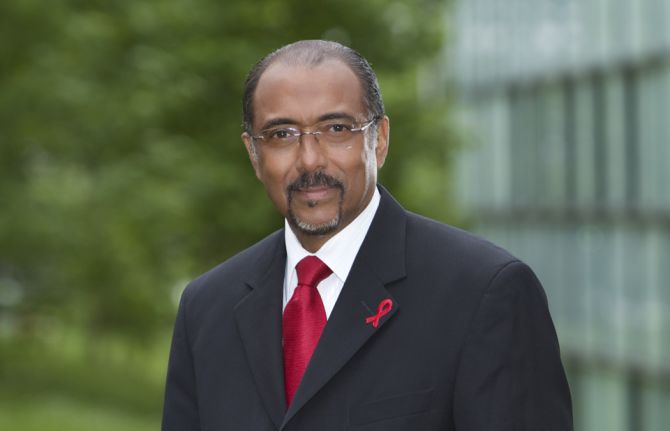

Press Statement
Instar a innovadores, ejecutores, inversores, activistas y líderes a acelerar el fin de la epidemia de sida para 2030
04 Junio 2016 04 Junio 2016UNAIDS Executive Director, Michel Sidibé, stresses the importance of a people-centred approach at up-coming United Nations General Assembly High-Level Meeting on Ending AIDS
NEW YORK/GENEVA, 3 June 2016—The AIDS epidemic has defined the global health agenda for an entire generation. The first AIDS-related deaths were diagnosed over 30 years ago and HIV rapidly became a global crisis. The epidemic threatened all countries and had the power to destabilize the most vulnerable nations. By 2000, AIDS had wiped out decades of development gains.
Today, many nations have taken great steps in getting ahead of the epidemic. South Africa, for example, has reduced the number of new HIV infections from 600 000 in 2000 to 340 000 in 2014. Life expectancy has risen in many of the most severely affected countries in sub-Saharan Africa as access to HIV prevention, testing and treatment has been scaled up. Worldwide, there are now more than 17 million people living with HIV accessing live-saving antiretroviral treatment.
But as world leaders grapple with a growing number of global concerns and threats, including massive displacement, climate change and an uncertain economic outlook—it would be a misstep to let up on the response to HIV. Here are three reasons why AIDS deserves continued attention and a Fast-Track approach:
- To restore dignity, health and hope to the people left behind in the AIDS response.
- To build robust and resilient societies ready to face future health crises
- To serve as a beacon for what can be achieved through international solidarity and political will.
Our generation has been presented with an opportunity that must not be thrown away. We have the technology, medicines and tools to end the AIDS epidemic by 2030, averting more than 17 million new HIV infections and saving almost 11 million lives.
In a few days, the United Nations General Assembly High-Level Meeting on Ending AIDS will bring people together around a common objective: ending AIDS by 2030 within the framework of the Sustainable Development Goals.
This global platform for innovators, implementers, investors, activists and leaders will challenge all of us to chart a course to end the AIDS epidemic by 2030. It will take our combined efforts to source sustainable solutions to close the gaps and reach a set of new global targets.
These targets are urgently needed. AIDS-related illnesses are the leading cause of death among women of reproductive age globally and the primary cause of death among adolescents in Africa. Stigma and discrimination continue to stop people accessing health care, including HIV prevention and treatment services that reduce new infections and save lives. In some regions of the world, the numbers of HIV infections are actually increasing.
Currently, of the 36.7 million people living with HIV, less than half are accessing treatment. We are failing to reach the people most in need. These include adolescent girls and young women, sex workers, gay men and other men who have sex with men, transgender people, prisoners and people who inject drugs.
Achieving the 90-90-90 treatment target by 2020 will be a key factor to ending the AIDS epidemic. This calls for 90% of people living with HIV to know their status, 90% of people who know their HIV positive status to access antiretroviral treatment and 90% of people on treatment to have suppressed viral loads.
Meeting this treatment target will set the world on course to ending the AIDS epidemic by 2030. But bold leadership and stronger investment are required. By 2020, combined domestic and international resources will need to increase by about one third to peak at an estimated US$ 26.2 billion to achieve this vision. A lack of investment now will result in the epidemic being prolonged indefinitely and that would be a false economy.
A Fast-Track approach to ending the AIDS epidemic requires a set of ambitious time-bound targets, including reducing the number of people newly infected with HIV from 2.1 million in 2015 to fewer than 500 000 in 2020, reducing the number of people dying from AIDS-related illnesses from 1.1 million in 2015 to fewer than 500 000 in 2020 and eliminating HIV-related discrimination.
In New York, brave decisions and new ambitious commitments need to be made—based on human rights and leaving no one behind—if we are to meet the Sustainable Development Goal of ending the AIDS epidemic as a public health threat by 2030.
AIDS is not over yet but it can be.
